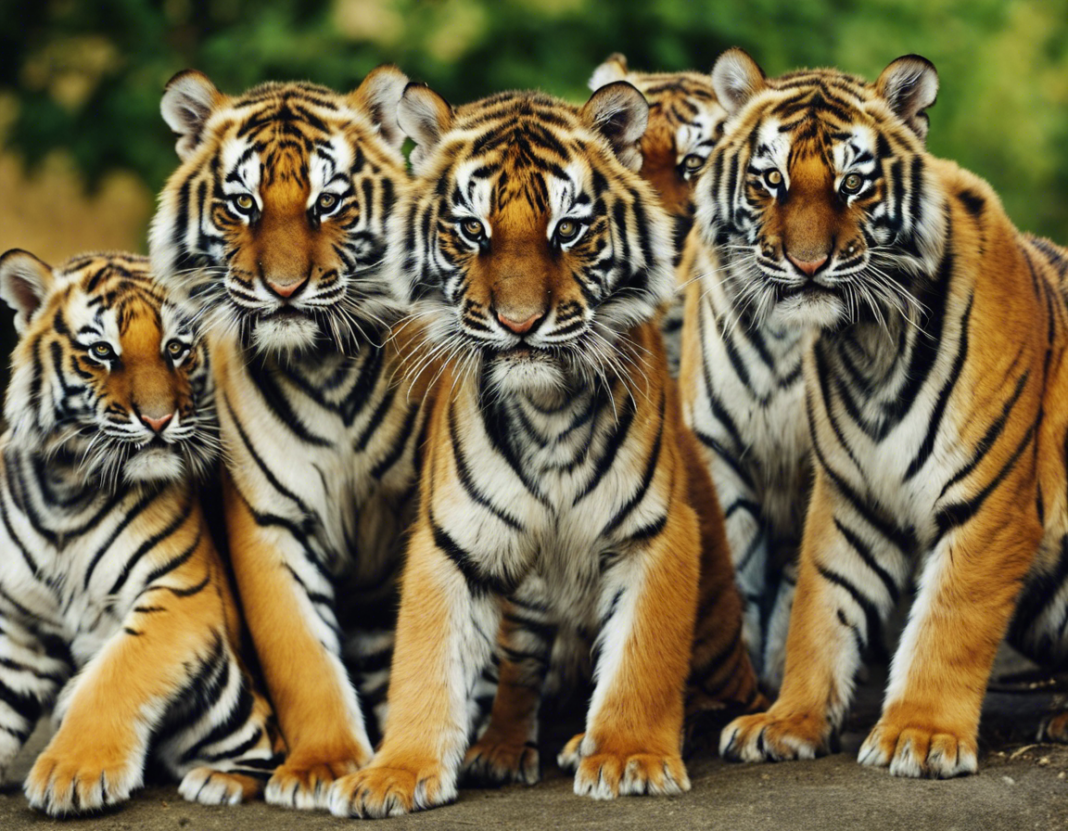Tigers are majestic and powerful creatures that have captivated human interest for centuries. From their awe-inspiring physical appearance to their elusive and solitary nature, these big cats have been a source of fascination and admiration across cultures around the world. One interesting aspect of tigers that many people may not be aware of is the term used to describe a group of these magnificent animals. While tigers are typically thought of as solitary animals, there are occasions when they come together in groups, and the term used to describe such a gathering is “streak”.
The Social Behavior of Tigers
Tigers are known for being solitary hunters, with each individual tiger typically staking out and defending its own territory. However, there are instances when tigers may come together for various reasons, such as mating or sharing a kill. These associations between tigers are usually temporary and are not as structured or permanent as the social groups formed by some other big cat species, like lions.
Understanding the Term “Streak”
The term “streak” is used to refer to a group of tigers that come together for a specific purpose, such as mating or feeding. This term is less commonly known compared to terms for groups of other animals, such as a pride of lions or a pack of wolves. The use of this term highlights the unique social behavior of tigers and underscores the fact that while they are predominantly solitary animals, they are capable of forming temporary alliances when the need arises.
Factors Influencing Tiger Social Behavior
Several factors can influence the social behavior of tigers and contribute to the formation of a streak. These factors include:
1. Mating Season: During the mating season, male and female tigers may come together to breed, leading to temporary associations between individuals.
2. Scarcity of Prey: In areas where prey is scarce, tigers may be more likely to share a kill with other tigers, resulting in a streak forming around a food source.
3. Territorial Disputes: Interactions between tigers defending their territories can sometimes result in the formation of a streak, as individuals come into contact with each other.
4. Family Groups: Female tigers with cubs may also form streaks, as the mother protects and raises her offspring.
Conservation Implications
Understanding the social behavior of tigers, including the formation of streaks, is important for conservation efforts aimed at protecting these endangered animals. By studying how tigers interact with each other and the factors that influence their behavior, conservationists can develop strategies to safeguard tiger populations and their habitats.
Frequently Asked Questions (FAQs)
Q1: Are streaks common among tigers?
A: Streaks are less common among tigers compared to social groups seen in other big cat species like lions. Tigers are primarily solitary animals, but they may come together in temporary groups for specific reasons.
Q2: How many tigers are typically in a streak?
A: The size of a streak can vary depending on the circumstances. It could range from a male and female tiger coming together to mate to a larger group of tigers sharing a kill.
Q3: Do tigers interact peacefully in a streak?
A: While tigers can come together in a streak for mating or feeding, interactions between individuals can sometimes be aggressive, especially in territorial disputes.
Q4: Are there any documented observations of streaks in the wild?
A: Yes, there have been observations of tigers forming streaks in the wild, particularly during the mating season or when multiple tigers are attracted to a common food source.
Q5: How long do streaks typically last?
A: Streaks are temporary associations between tigers and may last for a few hours to several days, depending on the purpose of the interaction.
Q6: Do streaks have a hierarchy or leader?
A: Streaks do not have a strict hierarchy like prides of lions. However, dominant individuals within a streak may assert themselves in certain situations.
Q7: What is the difference between a streak and a coalition of tigers?
A: A streak typically refers to a temporary grouping of tigers for a specific purpose, while a coalition usually involves male tigers forming long-term bonds to increase their chances of territorial control and breeding success.
Q8: Do all tiger subspecies exhibit streak behavior?
A: Streak behavior may vary among different tiger subspecies, with some populations showing a higher likelihood of forming groups compared to others. Factors such as habitat and prey availability can influence social behavior.
Q9: How do tigers communicate within a streak?
A: Tigers use vocalizations, scent marking, and body language to communicate with each other within a streak. These forms of communication help individuals coordinate their activities and avoid conflicts.
Q10: What are the conservation implications of understanding streak behavior?
A: Studying streak behavior can provide valuable insights for tiger conservation efforts by helping researchers and conservationists better understand how tigers interact with each other and how human activities can impact these social dynamics.
In conclusion, the term “streak” offers a glimpse into the complex social behavior of tigers and highlights the flexibility and adaptability of these magnificent animals. By exploring the factors that influence the formation of streaks and their implications for tiger conservation, we gain a deeper appreciation for the intricate dynamics of tiger society.

